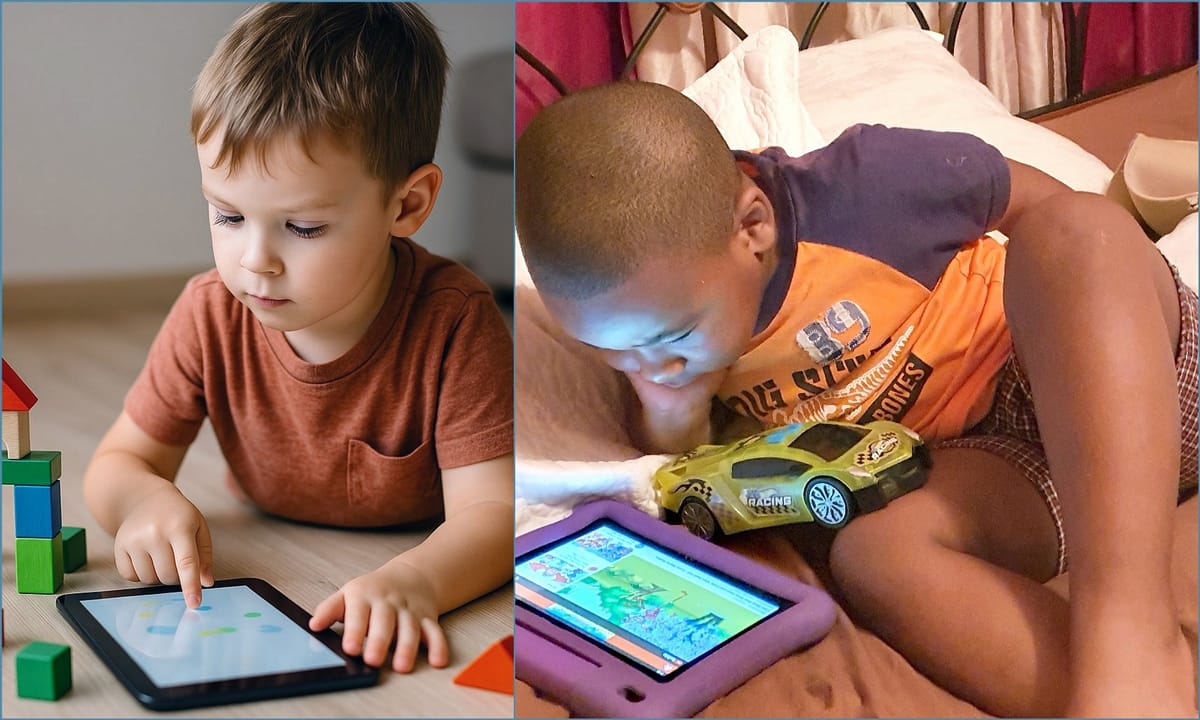Screens and Growing Minds: Supporting Playful Development in a Digital World

Introduction
Martha was halfway through cooking dinner when her toddler had a meltdown. In a moment of desperation, she hands him her phone—and just like that, peace. If you’ve been there, you’re not alone. For today’s parents, screens can feel like both a lifesaver and a source of guilt.
But here’s the truth: screens are not the enemy. When we use them intentionally, they can support our children's growth and development through play—the “G” in the GREATEST parenting roadmap. Young children learn best by active involvement, creating, imagining, and exploring. Our job is to protect that playful spirit, even in a world filled with screens.
What Growth Through Play Looks Like in Real Life
Growth, especially in the early years, happens through play. It’s how children make sense of the world, build motor and language skills, and develop emotional awareness.
Think of a child stacking blocks, pretending to cook in a toy kitchen, or turning a box into a spaceship. That’s not just play—it’s powerful, brain-building work.
Screens can disrupt this natural learning process if they replace too much of it. But when used wisely, even digital media can become a resource for creativity and connection.
Carla, a mom of two, shared: “After my son watched a show about animals, he spent the next hour pretending to be a zookeeper. It was his way of bringing the screen into real-world play.”
Why It Matters in Parenting
During the first five years of life, a child’s brain builds more than a million neural connections every second. These early experiences lay the foundation for learning, emotional regulation, and problem-solving.
Research supports this: A 2020 study published in *JAMA Pediatrics* found that young children who are exposed to screens for long periods have underdevelopment in brain white matter areas which are needed for language and cognitive growth. [^1]
At the same time, when parents guide screen use with purpose, screens can enhance learning. A study by Neumann found that children who used educational touch-screen apps with adult support showed gains in early literacy skills.[^2]
So it’s not just about limiting screen time—it’s about creating a healthy media diet that prioritizes real-world play, curiosity, and connection.
How to Support Growth Through Play and Screen Time
Here are five parent-tested ways to protect your child’s playful development—even with screens in the mix:
• Start With Play, Then Add Screens
Let screens extend learning, not replace it.
• Co-View and Talk
Sit with your child during screen time when possible.
• Set Play-Friendly Boundaries
Create screen-free zones during key times.
• Choose Quality Content
Look for slow-paced, educational shows or apps.
• Celebrate the Play That Follows
When your child turns screen inspiration into real play—cheer it on!
Encouragement for Parents
If you’ve ever felt screen guilt, take a breath. Parenting is full of trade-offs, and no one gets it right 100% of the time. What matters most is showing up with intention and care.
You don’t have to be screen-free to raise a curious, capable child. You need to be aware of the value of playful growth and remain connected to your child.
Reflect: What’s one way I can invite more play into our daily routine this week—even if screens are part of it?
Conclusion / Takeaway
When we pair thoughtful screen use with rich, hands-on play, we nurture the kind of growth that lasts a lifetime. That’s the heart of the “G” in the GREATEST framework—intentionally nurturing our children’s holistic growth and development through joyful, curious, and connected moments.
Call to Action
How do you balance screens and play in your home? Share a favorite activity or tip in the comments—we’d love to hear your ideas!
Footnotes
[^1]: Hutton, J. S., Dudley, J., Horowitz-Kraus, T., DeWitt, T., & Holland, S. K. (2020). Associations between screen-based media use and brain white matter integrity in preschool-aged children. *JAMA Pediatrics*, 174(1), e193869. https://doi.org/10.1001/jamapediatrics.2019.3869